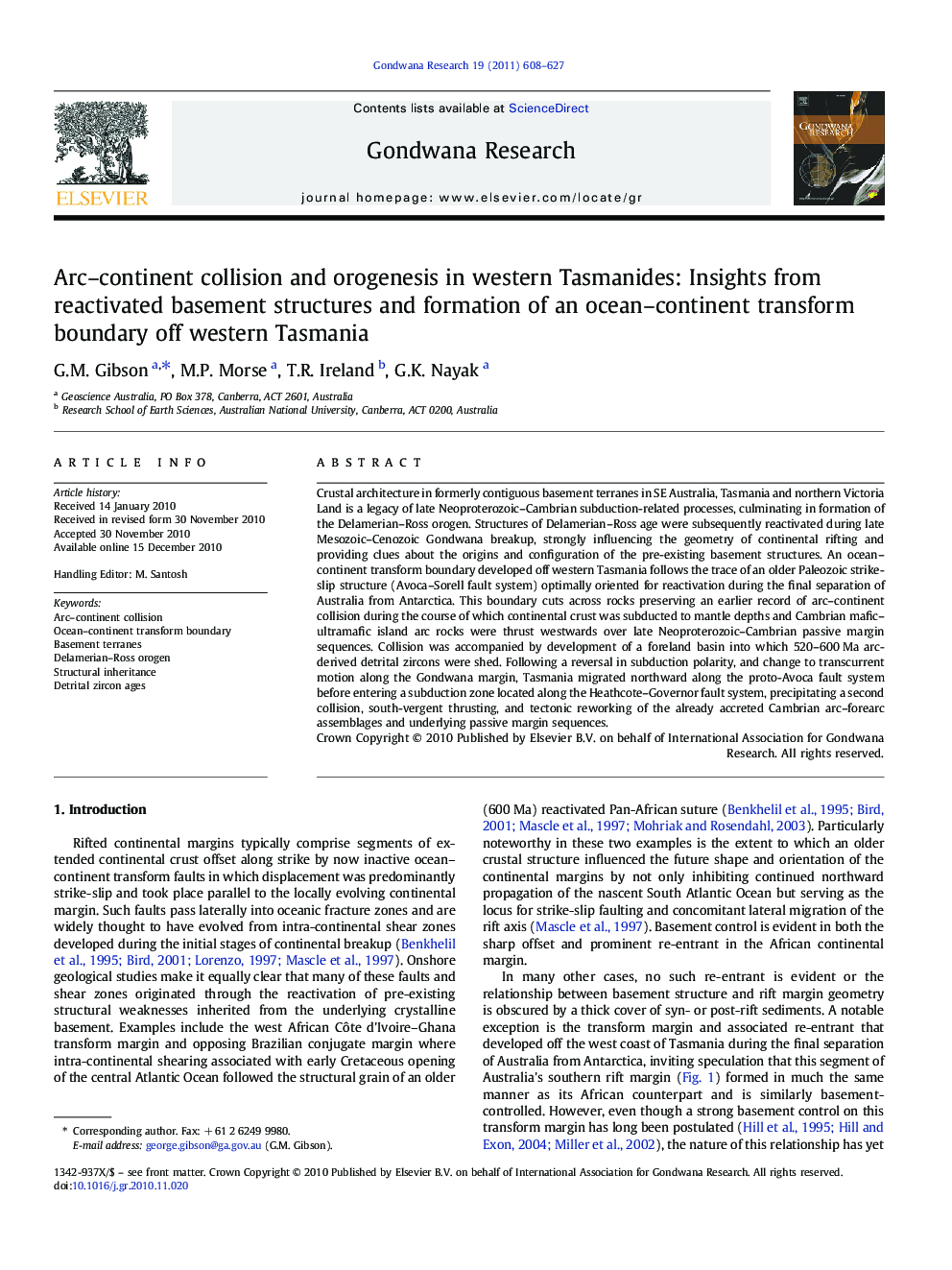| Article ID | Journal | Published Year | Pages | File Type |
|---|---|---|---|---|
| 4727205 | Gondwana Research | 2011 | 20 Pages |
Crustal architecture in formerly contiguous basement terranes in SE Australia, Tasmania and northern Victoria Land is a legacy of late Neoproterozoic–Cambrian subduction-related processes, culminating in formation of the Delamerian–Ross orogen. Structures of Delamerian–Ross age were subsequently reactivated during late Mesozoic–Cenozoic Gondwana breakup, strongly influencing the geometry of continental rifting and providing clues about the origins and configuration of the pre-existing basement structures. An ocean–continent transform boundary developed off western Tasmania follows the trace of an older Paleozoic strike-slip structure (Avoca–Sorell fault system) optimally oriented for reactivation during the final separation of Australia from Antarctica. This boundary cuts across rocks preserving an earlier record of arc–continent collision during the course of which continental crust was subducted to mantle depths and Cambrian mafic–ultramafic island arc rocks were thrust westwards over late Neoproterozoic–Cambrian passive margin sequences. Collision was accompanied by development of a foreland basin into which 520–600 Ma arc-derived detrital zircons were shed. Following a reversal in subduction polarity, and change to transcurrent motion along the Gondwana margin, Tasmania migrated northward along the proto-Avoca fault system before entering a subduction zone located along the Heathcote–Governor fault system, precipitating a second collision, south-vergent thrusting, and tectonic reworking of the already accreted Cambrian arc–forearc assemblages and underlying passive margin sequences.
Graphical AbstractFigure optionsDownload full-size imageDownload as PowerPoint slideResearch Highlights► Arc-continent collision produced the lower Paleozoic Delamerian-Ross Orogeny. ► A subduction flip and orogen-parallel strike-slip faulting followed this collision. ► Tasmania migrated northward along the Gondwana margin during strike-slip faulting. • Tasmanian crust was subducted beneath Victoria during a second collision event. ► Delamerian-Ross structures controlled formation of the Tasmanian transform margin.
